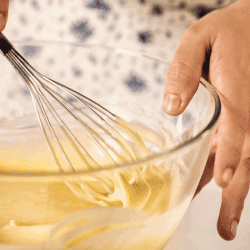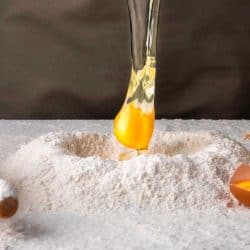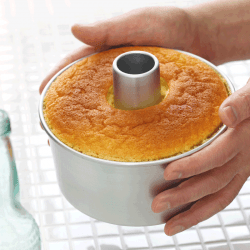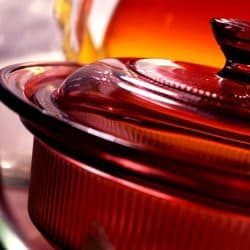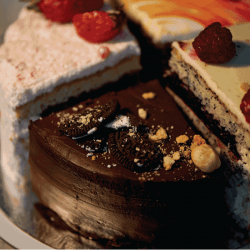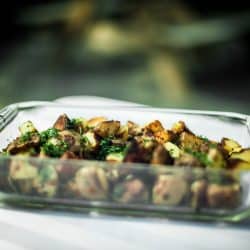You are probably wondering whether or not you should reduce the temperature of your oven when baking in glass. Do not worry for a second longer. We have researched all about baking in glassware for you.
When baking in glassware, it is a good idea to reduce the recommended temperature by twenty-five degrees. This also requires you to bake the dish approximately ten minutes longer than you normally would.
Keep reading to learn more about baking using glassware. We will talk about whether or not you need to bake longer in a glass pan, as well as the importance of greasing a glass baking dish and the best ways to do so.
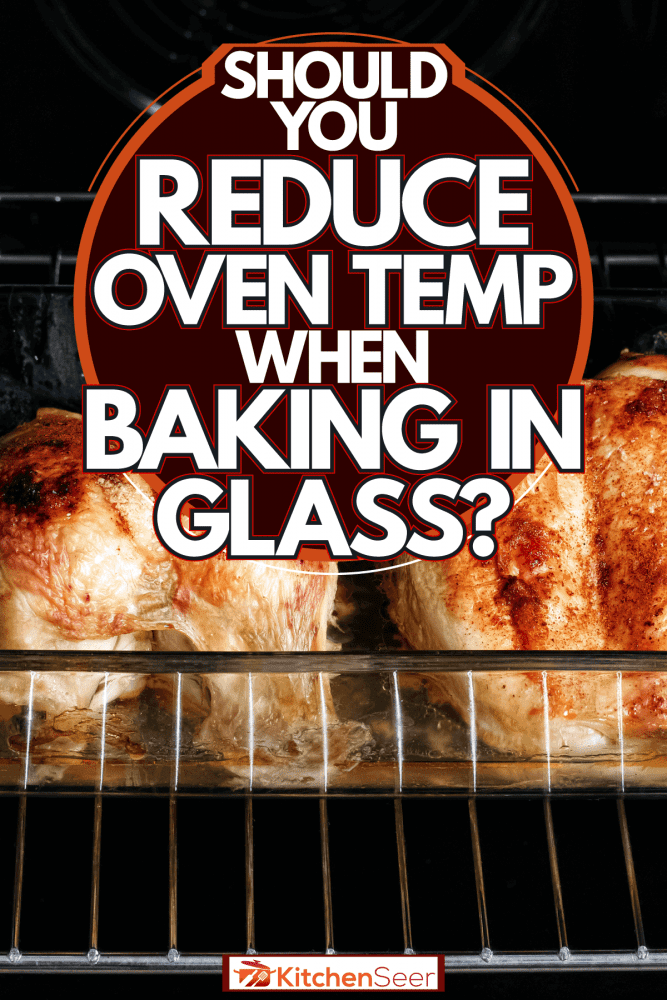
Baking in Glassware
Most glassware is dishwasher-safe and oven-safe to a certain degree, depending on what type of glass it is made of. Tempered glass is oven-safe, but non-tempered glass is not. There are temperature guidelines that vary depending on the glassware.
Whether you bake using metal or glass is a personal decision. People choose glassware over metal because the glass will not retain any lingering flavors such as acidic foods the way metal sometimes does.
When you bake in glass dishes, it is essential to understand that glass works as an insulator. Metal is conductive; therefore, it heats up more quickly meanwhile glass stays hot for a more extended period. This is significant because your dish will remain warm for a longer period of time after it is finished cooking.
Another reason people use glassware instead of metal is that metal corrodes over time. Glass does not. One more benefit of cooking with glassware is that your baked goods expand further than that same batter would in a pan made of glass or ceramic.
Safety Tips For Baking with Glassware
Remember to check the bottom of your dish, its original packaging, or manufacturer's notes to ensure your glassware is oven-safe. You should also check to see what temperature rating your glassware is meant for. For instance, Pyrex glass is advertised to be able to withstand up to five-hundred degrees.
An important safety tip to note is that you should never place glass dishes into a cold oven. Preheat your oven to avoid thermal shock. This is recommended for Pyrex glassware as well.
Another important tip about baking with glassware is that you should never place a hot glass dish directly onto a cold countertop. Doing so can cause the glass to shatter. You can either use potholders, a dry dish towel, or a silicone mat to put your hot dish onto.
What Bakes Best in Glassware?
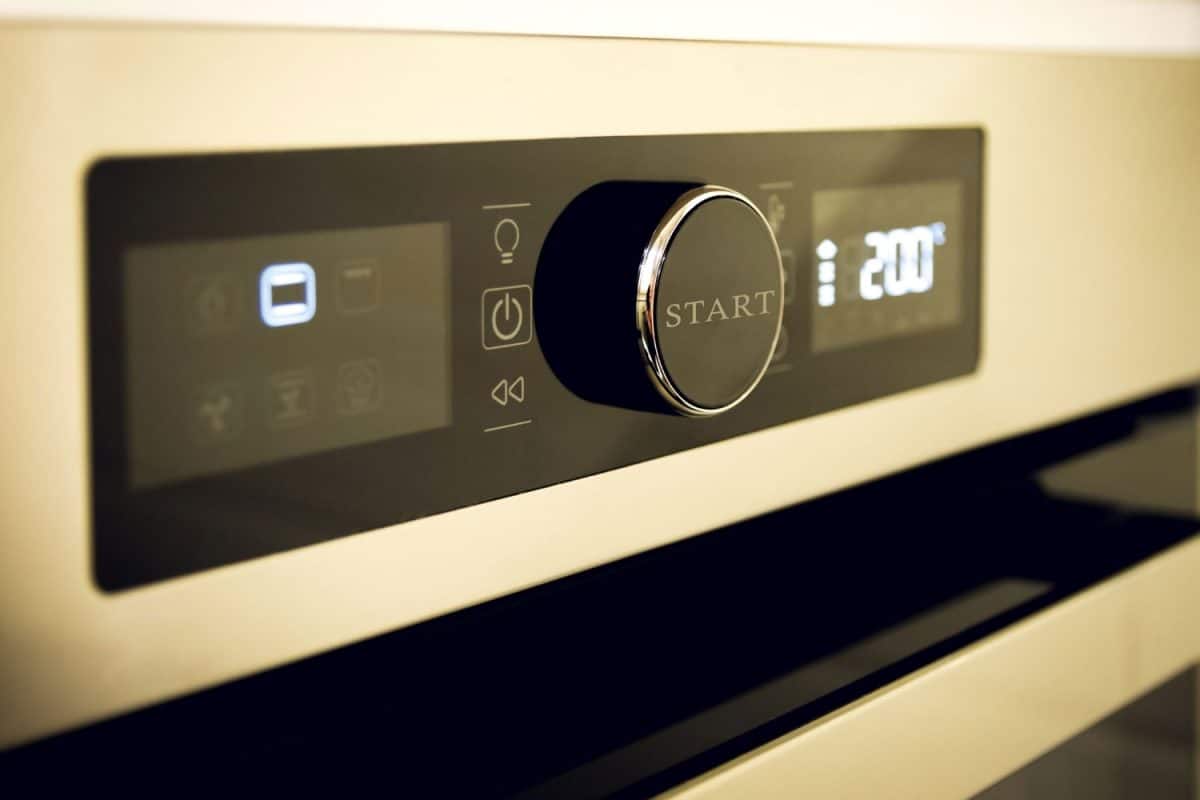
If you appreciate crunchy edge pieces when it comes to brownies, then glassware is an excellent choice for you. When it comes to cake, the top does not end up baking to be quite as tall because the heat transfers differently when baking in glass. Your cake will have crispier edges than if you bake it in metal.
The best dishes that bake in glass are casseroles, lasagna, baked spaghetti, bread, pies, and anything that does not have a crust. Recipes that require a temperature of above 425°F should be baked in a metal pan instead of glass. Keep in mind metal heats faster but cooks differently than glass.
Do you bake longer in a glass dish?
Yes, you should bake your dish for about ten extra minutes when baking in glassware. The reason for this is that the food on the outer edges will cook too quickly otherwise. You do not want crispy edges and a raw middle.
The extra time ensures that your food will be cooked thoroughly the way it is intended. You can test the middle of your cake by inserting a toothpick. If the toothpick still has cake stuck to it when you pull it out, the cake is not ready yet. Bake it for approximately five to ten more minutes.
Because glass retains and maintains its temperature, the food you are cooking absorbs the heat more quickly. This is another reason you should reduce the oven temperature that your recipe calls for by twenty-five degrees.
When baking in a glass dish, it takes longer overall, but the result is still delicious. There is a balance that you will learn through practice.
Can you bake with glass Pyrex?
You can indeed bake with glass Pyrex. Pyrex is rated for up to four-hundred and twenty-five degrees Fahrenheit. However, it is not meant to be used on a stove-top or under a broiler, just like any glass dish.
If you bake with glass Pyrex at a temperature above 425°F, you run the risk of the glass shattering. You will need a different material, such as metal, when baking using higher temperatures.
Is a glass baking pan non-stick?
Typically glass baking pans are not non-stick. Sheet cakes come out great when baked in a glass dish. Because glass is not non-stick, it is best to grease your baking pan or dish.
It is best to grease your baking dish regardless of what material it is made of. Baking is a science, so stick to your recipes and only lower the recommended temperature when baking in glassware.
Do you have to grease a glass baking dish?
You should grease your pan whether it is made of glass or metal. This prevents your food from sticking to the glass dish. Doing so is especially important when baking cakes or brownies.
How do you grease a glass pan for baking?
There are a few ways to grease a baking dish that will work sufficiently. You can use a paper towel to put butter or vegetable shortening on the glass pan to spread it on all of the insides of the dish. Butter is preferred by most, but it is ultimately up to you what you use to grease your pan with.
One little trick is to add a little bit of all-purpose flour will also prevent your food from sticking. When you add a thin layer of flour to the grease or butter in the pan, the flour will work as a barrier.
The flour prevents your cake from absorbing the grease. You can pat the glass baking dish to spread the flour around the dish. You mustn't overdo it and make sure the layer of flour you use is only lightly dispersed.
You can use parchment paper to line your glass baking dish as an alternative to grease or butter and flour. Aluminum foil works, too, but it will give your cake an odd shape.
Shapes and Sizes of Glass Bakeware
The most commonly used sizes and shapes of glassware made for baking are as follows:
- 8" x 6" x 1 1/2" round
- 11" x 7" x 1 1/2" oblong
- 9" x 9" square
- 13" x 9" x 2" oblong
- 14" x 10" x 2" oblong
- 11" x 15" oblong
The recipe you have will suggest the size glassware or dish that you will need. Usually, you will be given options to choose from and varied cook times based on which baking dish you choose. It is a good idea to keep multiple sizes on hand to have the one you need available.
The most commonly used size for bakeware is a 9" x 13" pan. This size is available in glass, metal, and ceramic. Be mindful when choosing the size of your pan.
If you use a 9" round pan for a cake recipe that calls for an 8" round pan, you will end up with a thin cake. These proportions are essential to consider. If you want to make double the cake batter, you will need a larger pan to bake it in.
How do I know the right time frame?
Bake times vary depending on how deep your pan is and how much batter or food you must bake. It is also an option to split your batter into two smaller pans, such as using two 9" round cake pans instead of one 9" x 13" pan.
If you are in a predicament where you do not have the right size pan, still fill the pan two-thirds of the way full. You can also add any additional batter to a cupcake pan so that you do not have to waste any of your batter.
It is essential to remember to reduce your oven temperature and bake your dish for slightly longer than you usually would if you bake using glassware.
In Closing
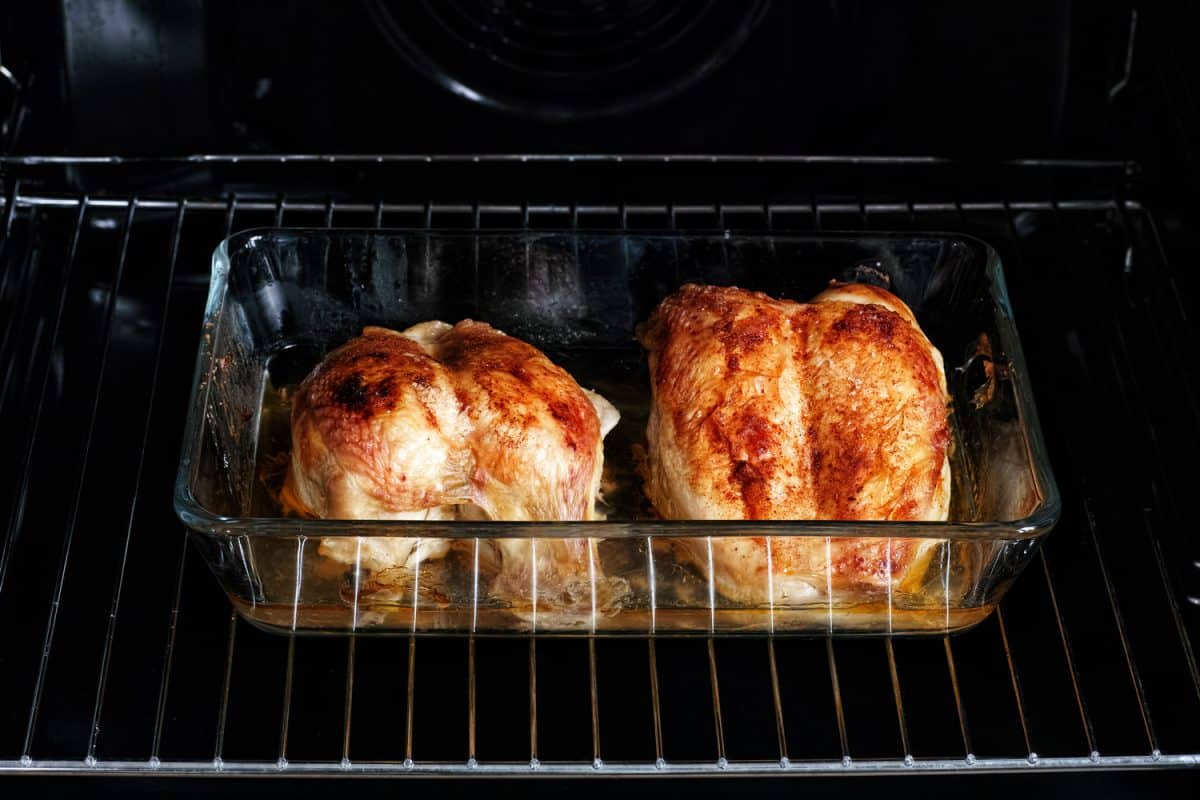
Lowering your oven temperature when baking in glassware will help your food cook more evenly. We suggest you reduce whatever temperature that your recipe calls for by twenty-five degrees. This also requires that you bake food a little longer than you would otherwise.
Glass is non-porous; therefore, it does not absorb odors. You will not have to deal with stains left behind either. It is important to remember glassware takes more time to heat up but retains heat longer than metal.
Before you go, check out the following links:
Are Glass Containers Oven Safe? [Here's How To Tell]
Can You Bake Bread In A Glass Loaf Pan? Does It Take Longer?


